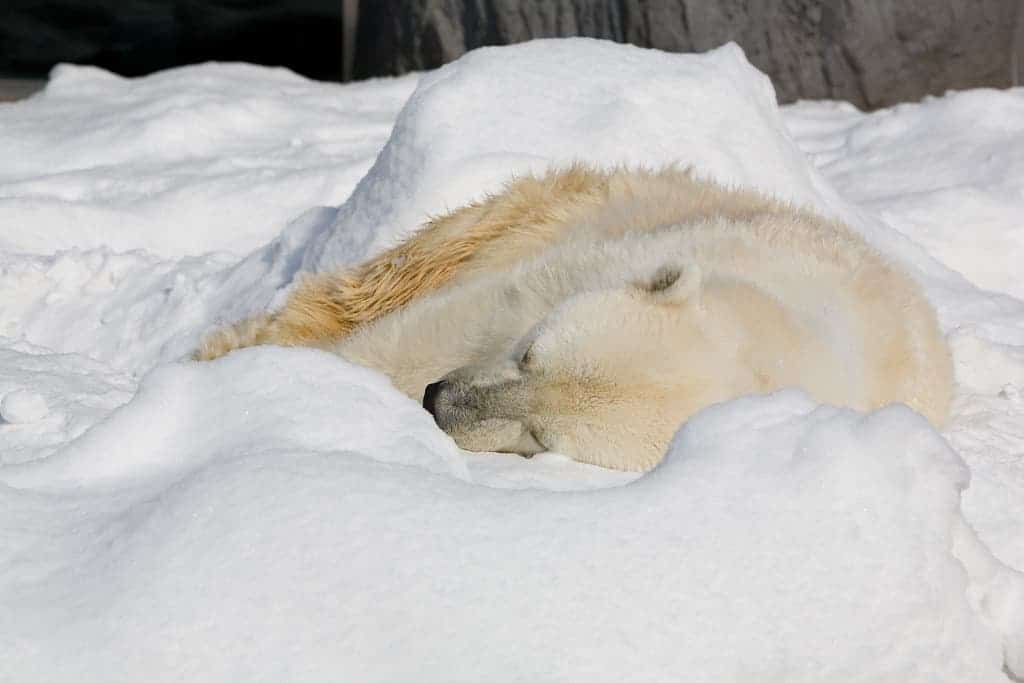If there’s one animal that best represents the challenges of climate change, that’s the polar bear. As temperature rise and sea ice melts, polar bears are forced to spend more time finding food on land — food like bird eggs. But as it turns out, they are no very good at finding bird eggs.

The Arctic is currently warming twice as fast as the rest of the planet and unsurprisingly, Arctic animals are desperately struggling to cope with the changes. All the creatures in the food chain are affected, but predators suffer even more, as they see their usual hunting grounds reduced year by year.
Although polar bears traditionally feed on other marine mammals hunted on the sea-ice, they are known to opportunistically forage on land too. This used to be nothing more than an occasional snack for them, but in recent years, it has become more common. Reports of bears foraging on eggs in avian colonies have increased, with bears going onshore when the birds breeding season starts.
University of Windsor biologist Patrick Jagielski and colleagues looked at the decision-making behaviors of polar bears while foraging in a large common eider (Somateria mollissima) breeding colony. They observed the polar bears with drones between 5.30 and 20.30, filming when bears were actively foraging on eggs. Drones in particular offer a novel way to study Arctic animals, in an environment that has long been challenging for research.
The study was specifically carried out on Mitivik Island, a 24-hectare island located in Canada’s Hudson Bay. This small area of land hosts up to 8000 sea ducks, or eiders, every summer. And they are so numerous that the island’s name literally means “the duck place.” No wonder it has become a favorite place for many hungry polar bears.
Changing sea-ice conditions have created a phenological overlap on Mitivik Island so that polar bears now move onto land during the egg laying and incubation period of eider ducks. Consequently, bears are increasingly foraging on eider eggs in this large seabird breeding colony, accumulating an important number of calories. This is very bad news for the eiders, and not particularly great news for the polar bears.
The researchers noticed that the bears were first picky about which eggs they ate, probably avoiding those covered with feces – a strategy used by the eiders to avoid predators. But eventually, the bears overcame their distaste and decimated the eggs, almost depleting the colony. Nevertheless, they weren’t effective hunters.
“We found that later-arriving bears increasingly visited more empty nests and did not travel in an energy-minimizing way, but became less picky in the clutches they consumed,” Jagielski said in a statement. “This demonstrates that, while species are able to incorporate ‘less preferred’ resources into their diet when their primary prey becomes more difficult to obtain, they may not be able to do so efficiently.”
This suggests that as bears are forced to spend more and more time foraging on land, they’ll expend a lot of effort with little food to show for it.
A study earlier this year found that polar bears are now relying much more on terrestrial food resources, which have considerably lower energetic densities and lower overall digestible energy. A polar bear would have to eat 1.5 caribou, 37 Arctic char, 74 snow geese, and 216 snow goose eggs to equal the digestible energy of an adult seal.
Meanwhile, another study from 2020 showed that if humans don’t greatly reduce their greenhouse gas emissions in the following years, most of the populations of polar bears will struggle to survive beyond 2100. Some populations are already close to their survival limits as the Arctic sea continues to shrink, the researchers found.
The study was published in the Journal of the Royal Society.









